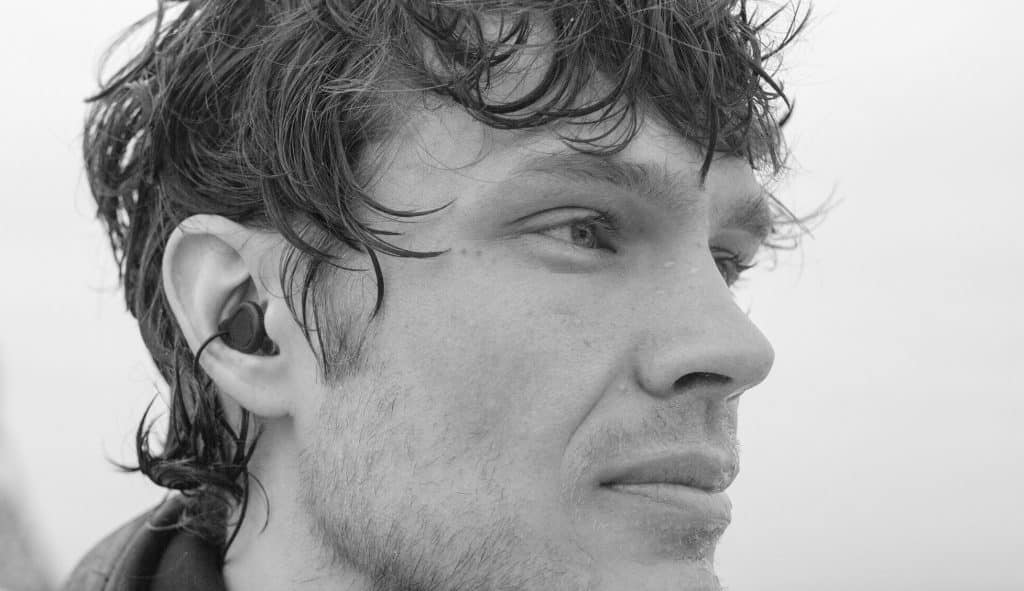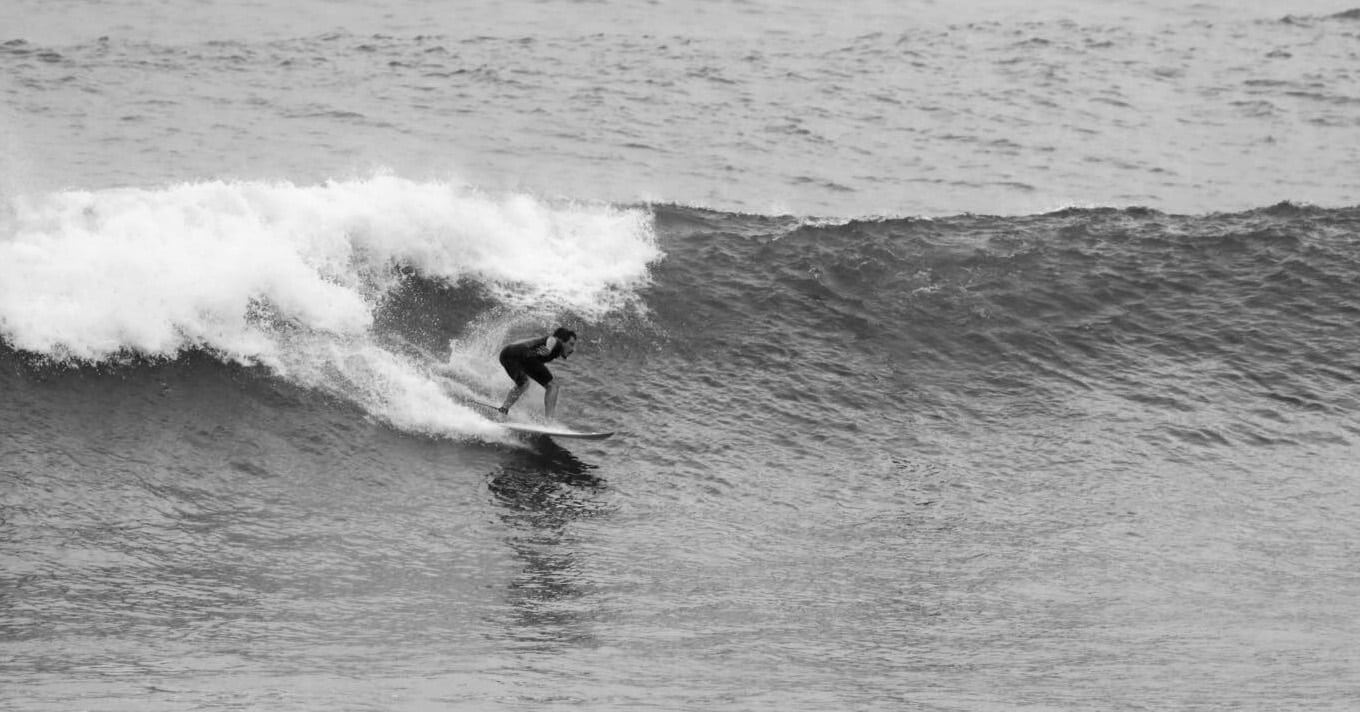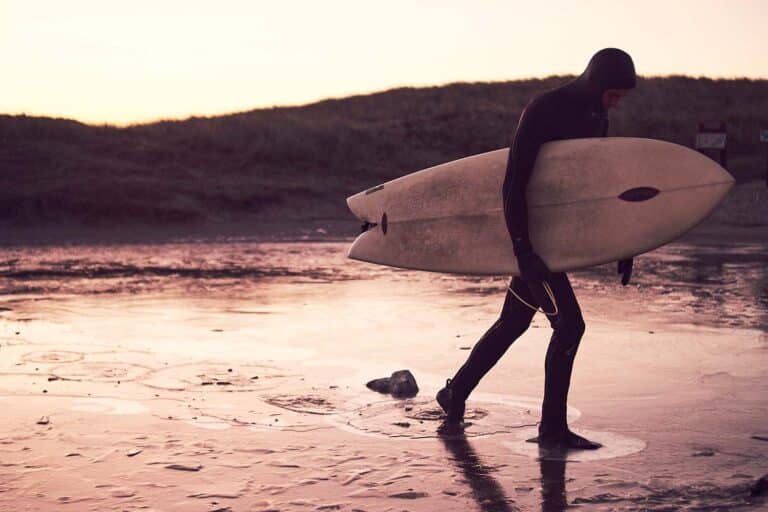Keep the senses clear
Words by Brandon Rasman, BKIN, MSc. Photo above: Ana Catarina Teles
“Vertigo” episodes in the surf
Every surfer knows the feeling when the ocean shows it’s the boss. Waves are our source of happiness, passion and thrill, but also act as instruments of physical and mental punishment. Sometimes we get taken for a beating – tumbled over and over, held under heaps of force, pounded endlessly by water – and come to the surface completely disoriented with the world seemingly spinning around us. A strike of this vertigo-like symptom is unpleasant and dangerous to have while surfing. What just happened? Well, this is a case of our sensory systems getting fired up in an unusual manner, and the brain trying to understand it all. Most surfers will have some idea of what I’m talking about. What may be surprising is that we can go a long way in preventing these dizzying experiences by wearing ear plugs. As it turns out, getting a flush of water into the ears does a lot more than cause discomfort – it affects our vestibular system.

The vestibular system: a vital sense for balance and orientation
Did you know we have a guidance system for three dimensional space sitting in our ears? Fixed within the inner ear and continuous with the cochlea (auditory organ) is the vestibular apparatus. The vestibular organs are responsible for detecting how the head is oriented and moving in space. This information is vital for numerous functions important for surfing such as: balance control, spatial orientation (where our body is and what’s up and down), and eye movement reflexes.
It’s pretty cool how the vestibular organs work. When the head moves, fluid within the vestibular structure flows causing hair cell receptors to bend and elicit neural impulses. The organs on both sides of the head work as a pair, simultaneously changing their firing rates and patterns to alert the brain of how the head is oriented. Now, in normal scenarios, vestibular signals of head motion are accompanied by other signals that are confirming the same message. For example, if you turn the head left, the eyes detect visual movement and proprioceptors in the muscles detect neck movement. Together with vestibular cues, our brain gets a pretty nice picture of what’s going on. In some cases, however, these signals may not deliver matching stories.
Water causing problems
A long-standing technique to assess vestibular function is to inject warm or cold water into the ear canal, known as caloric vestibular stimulation. Here’s how it works. When water enters the ear (at temperatures different than that of inner ear), convection currents are created in the fluid filling the vestibular canals. This causes those hair cell receptors to activate, transmitting a signal of head motion. A sensory conflict now exists between orientation cues. In essence, vestibular signals are telling the brain that the head is moving in space, whereas other signals (vision, proprioception) are saying no. I know it sounds strange, but this technique has widespread research and clinical applications. However, if you ever try it, you’ll have a dizzying sensation.
It took me a while to figure out that this phenomenon was occurring during my surf sessions. I remember surfing at a spot with a difficult paddle out. The ocean was pretty cold (~8ºC) and I had dived through endless walls of white water to make it to the line-up. I wasn’t getting thrown around much, yet after a while, I started to get a minor episode of vertigo. It was frustrating not only because I was feeling messed up, but it was affecting my balance while surfing. I’ve always had issues of water flowing into my ears too easily and this day was no different. Sitting out in the surf, floating like a tea bag, I started to piece together what was happening. Dang water was having its way with my vestibular system!
Wearing SurfEars to keep our senses clear
My theory was confirmed (at least to myself) after I tried surfing with ear plugs. I was on a lengthy surf trip in New Zealand and on the second week decided to get a set of ear plugs. I went to a local surf shop and the owner suggested I try out the new SurfEars (2.0), so I gave them a go. At this point of the trip, I was surfing the Taranaki Coast, which was getting pumped with large southwest swells – a perfect time to give the ear plugs a test. I surfed one spot with a firing left that you could take a couple hundred yards. However, as I learned the hard way, getting caught on the inside meant dealing with a whirlpool. I caught some killer rides during these sessions but also got rocked a few times and was tossed around by some big sets. The biggest thing I noticed, was every time I would surface from a pummeling, I felt I had my wits about me. Of course, if I got flipped several times there was always the initial shakiness, but this faded much faster than usual. The plugs were working. Coming from a research background, I didn’t want to get carried away with observations from a few sessions. Over the rest of my trip (3 months), I went surfing with and without my plugs. This gave me a better sample size. Comparing all my sessions helped me make up my mind – the ear plugs protect my vestibular system.

There’s a problem with simply “plugging” the ears to block out water, and that has to do with our hearing. I won’t go into as much depth, but long-story short, auditory cues also play an important role for balance and orientation. Through a process called sound localization, the brain compares time and level differences of sounds from both ears to determine the location and origin of a noise. Sounds need to be clearly heard to get an accurate localization. So, we don’t want water getting in the ear canal for that reason, nor do we want to block out sound while protecting the ears. That’s why I was stoked with my SurfEars. They’re designed to let the sound in and I have no issues with hearing when wearing them!
Surfing is a challenging activity already, and having vestibular and auditory signals distorted by water flowing into the ear only makes things harder. Do yourself a favor and start wearing SurfEars. Your brain will thank you for it and you may have sessions with a much clearer head.
Let sound in, keep water out, and keep the senses clear.
About the author
Brandon Rasman recently completed a Master of Science investigating human balance control at the University of British Columbia (UBC). He has been involved in several research projects pertaining to postural control, perception, and vestibular physiology. He currently works as a research assistant UBC and will be starting a PhD program in 2018. When he’s not in the lab, Brandon likes to spend his free time surfing or snowboarding. You’ll rarely find him in the city on weekends as he’s usually chasing swells or fresh snowfalls.

